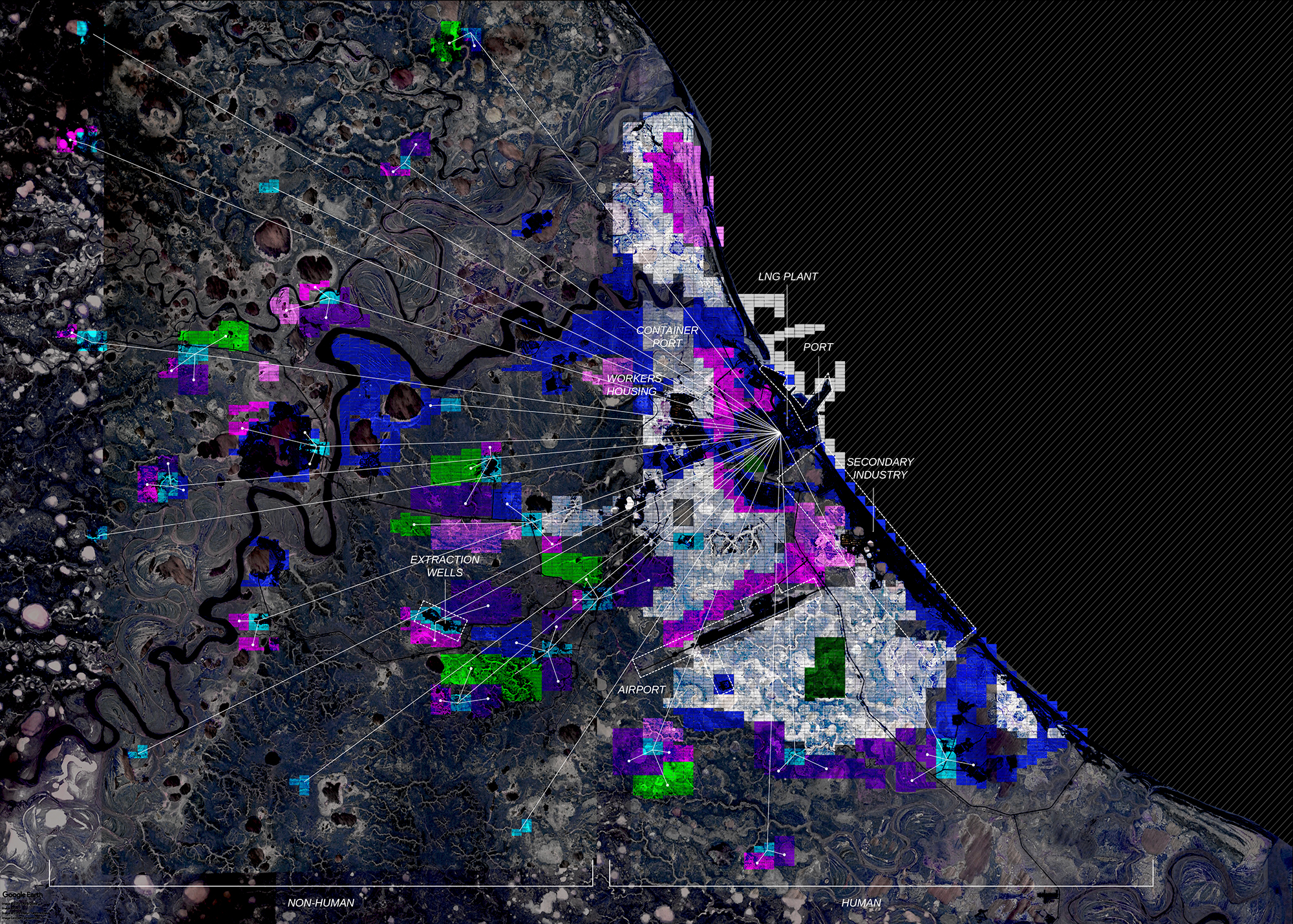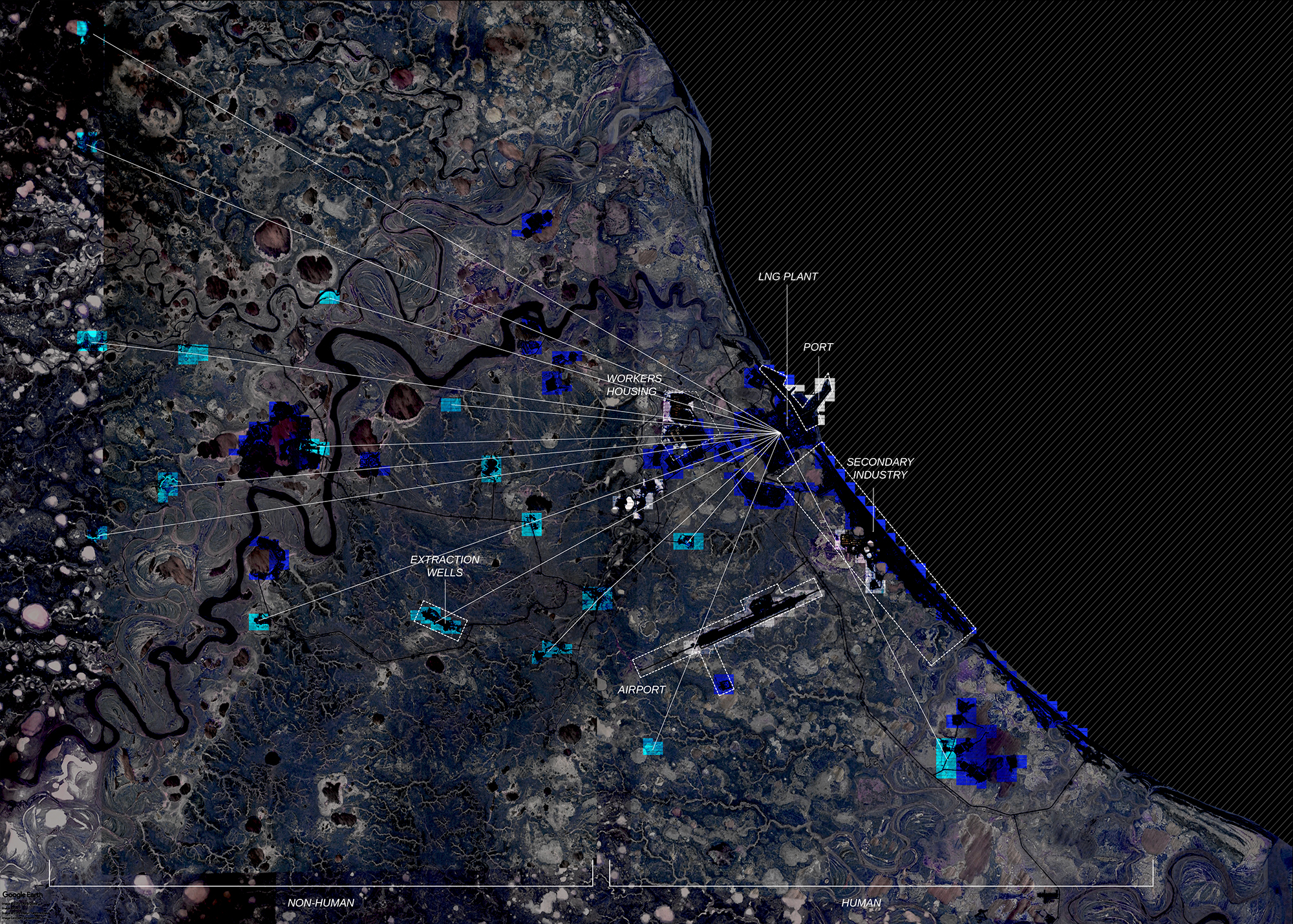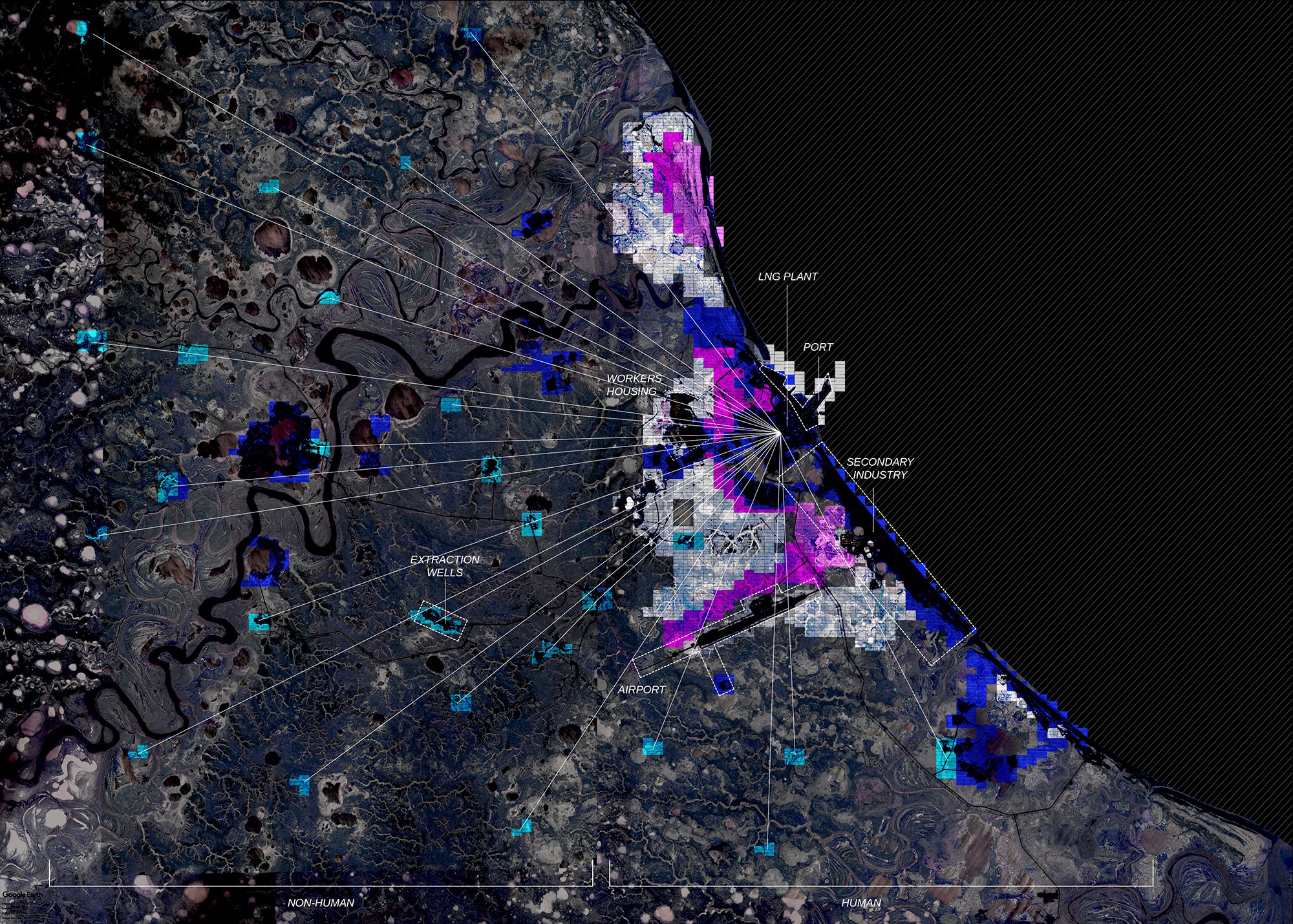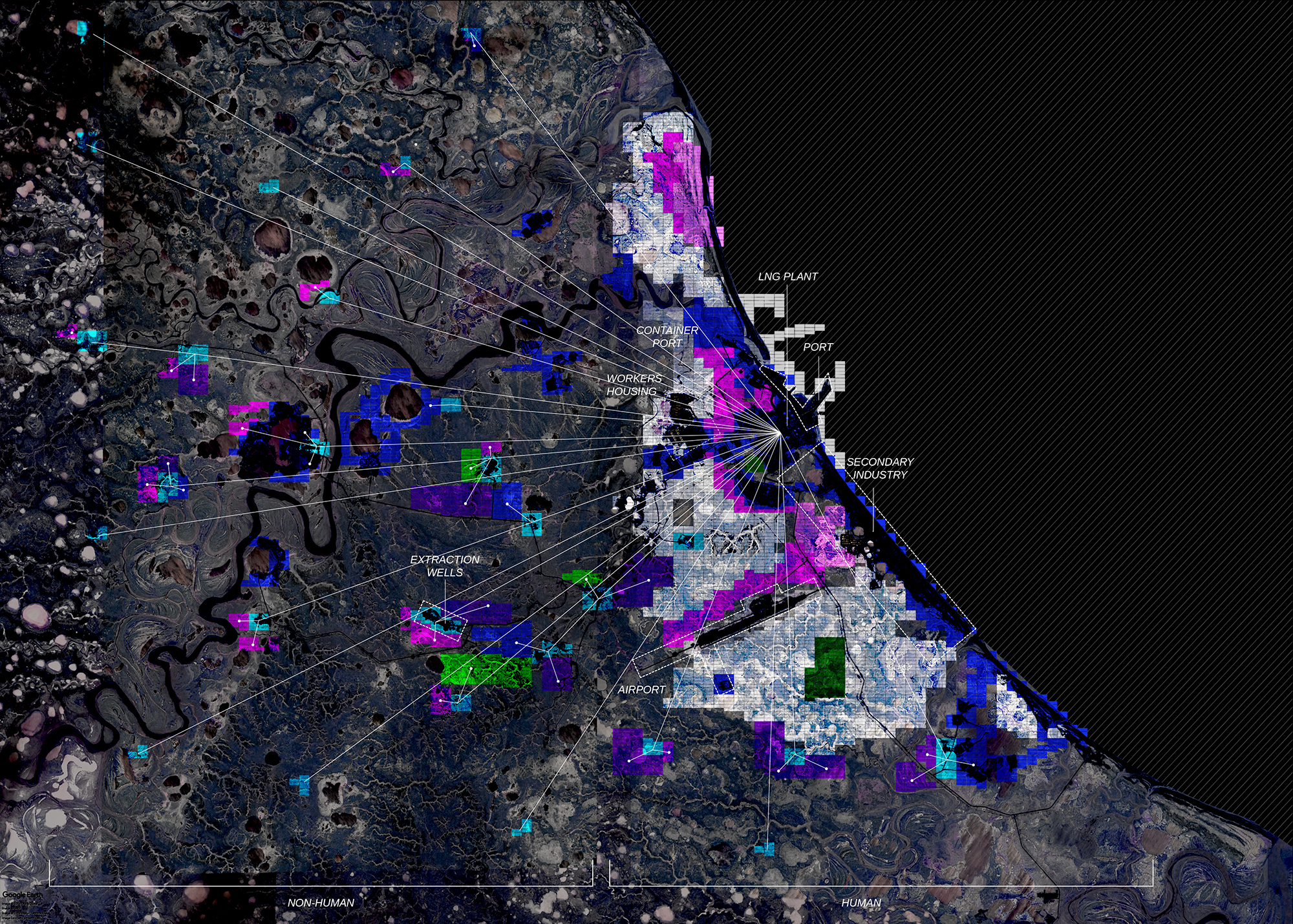The
Breathing
Arctic
Concentration of CO2 in the atmosphere
Carbon Life in the Arctic Circle
________
With the increase of global temperatures, the Earth faces a moment of singularity: the opening up of the Arctic. For the first time in human history, ships are able to travel the Northern Sea Route all year round without any help from the nuclear-powered icebreakers that used to support them in the past. At the same time, people will live in permanent settlements as far north as never before. The decrease of the Arctic ice is the result of a global process, and at the same time, its effects will resonate in the rest of the world. Fossil fuels harvested in the Arctic Circle have been burned in the economic powerhouses of the West and the East, changing the composition of Earth’s atmosphere. The “Breath of the Earth” is changing.
We propose to tap into the vast geological reserves that have been exploited for resource extraction in the fossil era and return the carbon from the atmosphere into the ground. Ships that have previously brought natural gas and oil to Europe and China can return with carbon that was captured at the source to the Arctic reservoirs. At the same time, carbon air capture technology will be rolled out across the Arctic Circle, since the atmospheric concentration is higher here than anywhere else on earth, it is the most crucial place to extract it.
As the latest technological advances show, the captured carbon can then be used to create biofuels to power commercial shipping and energy demands in the arctic circle or be stored deep in the ground. The distributed infrastructure network around the Arctic can be thought of as an artificial lung, controlled half and half by human and natural actors. This will be made possible through the implementation of an Ethereum-based blockchain that provides the economic framework to financialize carbon capture and storage and make it a profitable area for investment.
With the use of data cables that are currently being planned, the digital environment of the Arctic States will change, and new distributed networks will draw the link between human-made infrastructure and nature. This will be the human touch on the Earth’s stuttering breath that will be able to regulate it in the future, depending on what atmosphere humanity and the Earth’s flora and fauna requires. These cities that emerge all around the Arctic Circle are a place where a new kind of civic society can exist, centred around a life with the planet.
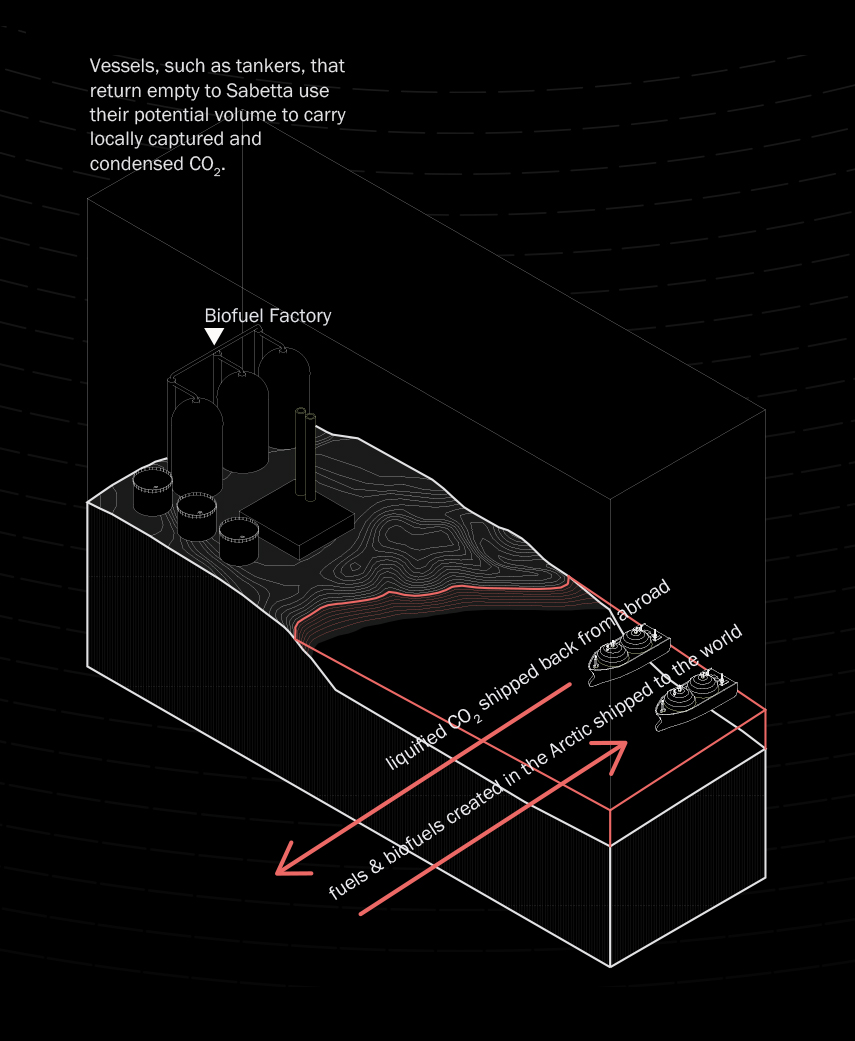
The Arctic Region
______
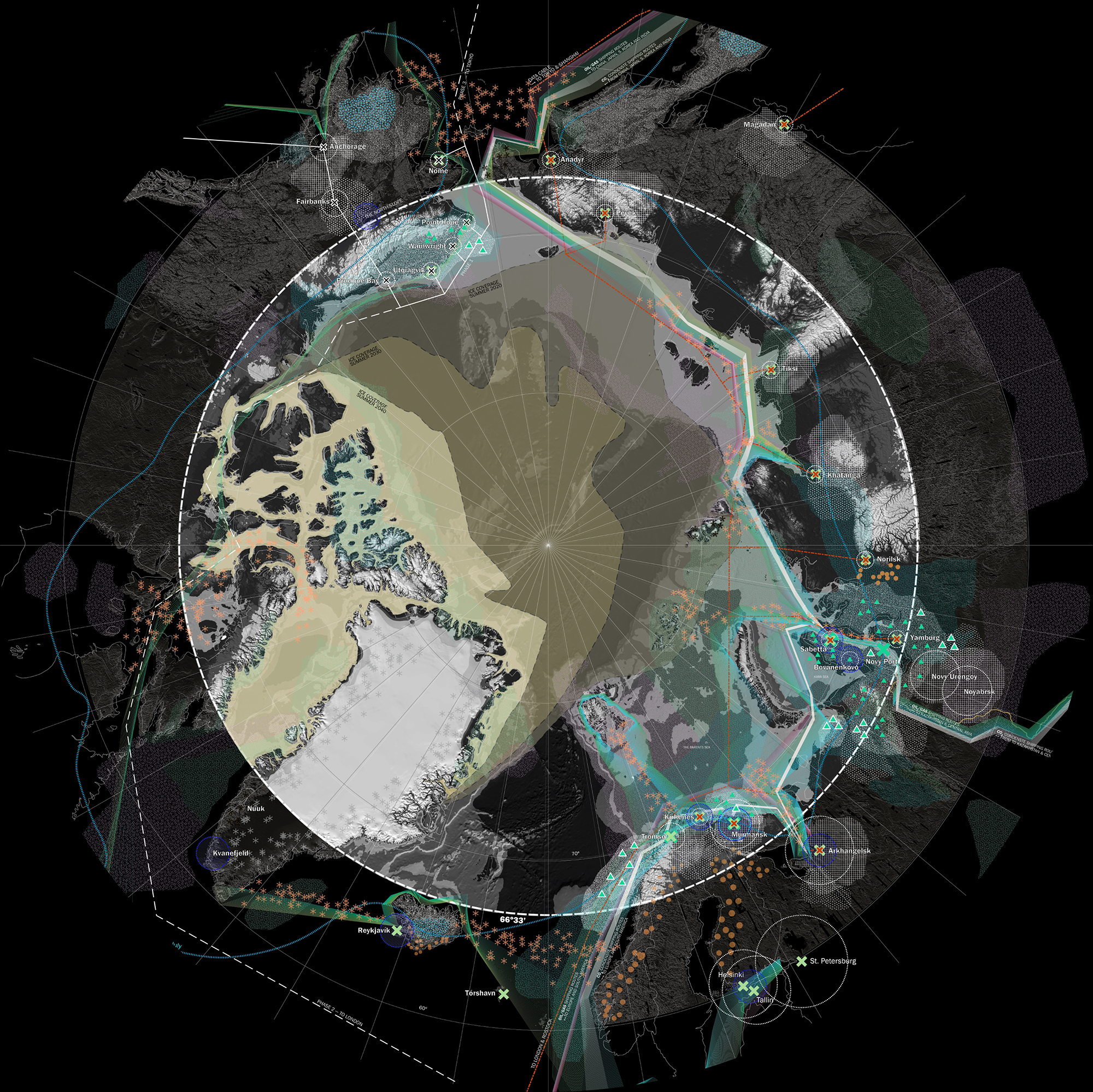
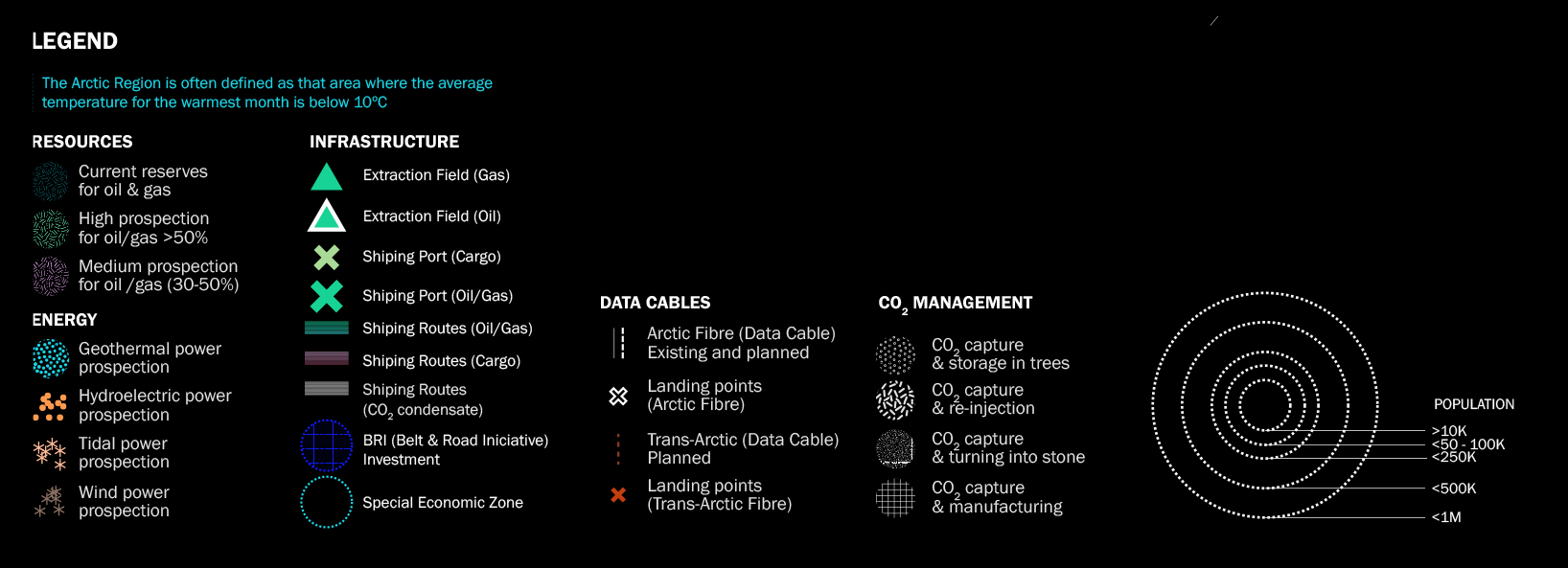
The Polar Silk Road
_____
When China launched the Belt and Road Initiative (BRI), also called the New Silk Roads, a few years ago, the Northern Sea Route played an important role. It featured in their Arctic White Paper as a major connection between China and Europe via Russia. The importance of this route is increased by the fact that it passes through areas with huge fossil resources that both China and Russia are looking to harvest. During the 1970s, the Russian government invested in various settlements along the Arctic coast, creating incentives to urbanize the polar coast. This practice was in contrast to other countries, as for example Canada, where workers never remained the whole year. Most of these northern cities decayed after the fall of the Soviet Union when they adopted the same rotational method, leaving behind shrinking cities and company towns of no more than 10.000 people. Now, with the recent interest on the Polar Silk Road, there is a renewed interest in the development of the Arctic coastline.
+ Sabetta (RU)
_____
Located in the Yamal Peninsula, this locality is home to the biggest Liquefied Natural Gas (LNG) plant in Russia yet. The main stakeholders are Novatek (50.1%), China National Petroleum Corporation (CNPC) (20%), the Silk Road Fund (9.9%), France’s Total (20%) and required an investment of ca. US$27 billion. This ambitious project includes an airport and port to help the plant manage all exports. LNG is currently shipped from Sabetta to China, South Korea, India, Europe and South America. Only in the first 10 months of 2018, shortly after the plant’s inauguration, 5 tankers completed their journey to Shanghai and back. At the same time, there are plans to create a new LNG port in Rostock (DE) in the next years. Apart from shipping LNG, the port has started to expand its container capacity, turning it into a cargo port and increasing the number of ships docking at this point. The rapid development of this area has changed the terrain into a man-made landscape, nevertheless the population remains below 3.000 people.
+ Bovanenkovo (RU)
_____
South-west from Sabetta, this gas field holds some of the biggest natural gas reserves in the Arctic. Thanks to Sabetta’s development, Gazprom Neft ―the company holding the licences for any exploration in the Yamal Peninsula―is currently investing a railway extension to join both towns.
+ Kirkenes (NO)
_____
By 2018 Kirkenes a company town of less than 4.000 people, will become the home of one of the biggest projects within the BRI. Norway, Finland, Russia, Japan and China have revived the Trans-Arctic Fiber project, a data cable that will start in this small town in the northern part of Norway and will run along the Russian Arctic coastline. With an investment of roughly US$820 million into an underwater cable, Scandinavia, Russia and East Asia will benefit from an Internet connection at least 5 times faster than the one existing right now, fostering the relocation of the financial market, the appearance of new data centers or new entrepreneurial projects, among other possibilities.
+ Murmansk (RU)
_____
In 2010 this city was turned into a Special Economic Zone under the logistics category, creating incentives for more traffic into the numerous ports located along this city’s coastline. Most of the oil shipped to Europe comes from this port, from Floating Storage and Offloading Vessels (FPSO), like UMBA, a FSPO with a capacity of 300,000 tons operated by Gazprom Neft that receives oil from different fields and then ships it to European ports. At the same time, new infrastructure developments start to appear in the area. In a coastal plot in Belokamenka, located outside of Murmansk, Novatek will build a second LNG plant on four artificially created islands. While North of this region, plans to build a new refinery have been talked about in the news. These multiple investments mean that the city will expand in the next years.
Carbon Capture Technology
______
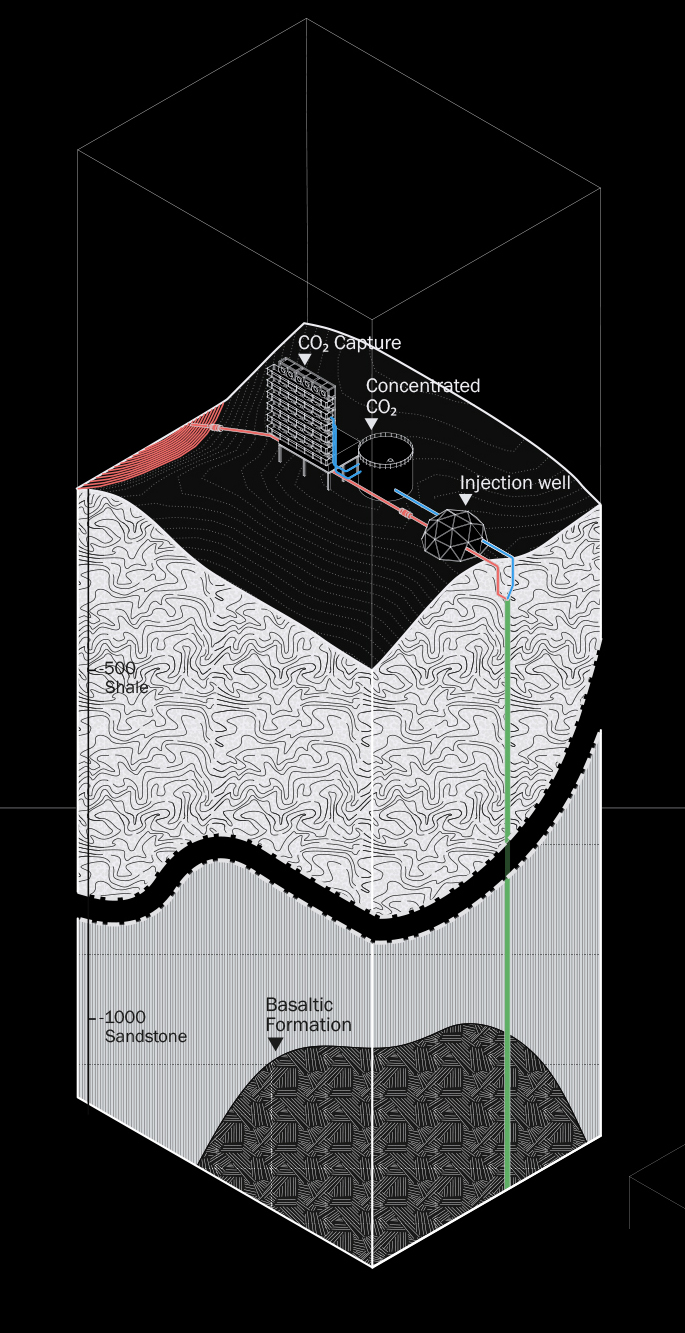
Carbon Capture
_____
CO2 is captured either directly at the source of combustion before it is released into the atmosphere or it is extracted from ambient air through condensation with the help of large turbines. This process is called Direct Air Capture (DAC) and currently conducted by several companies such as:
https://carbonengineering.com/
https://www.climeworks.com
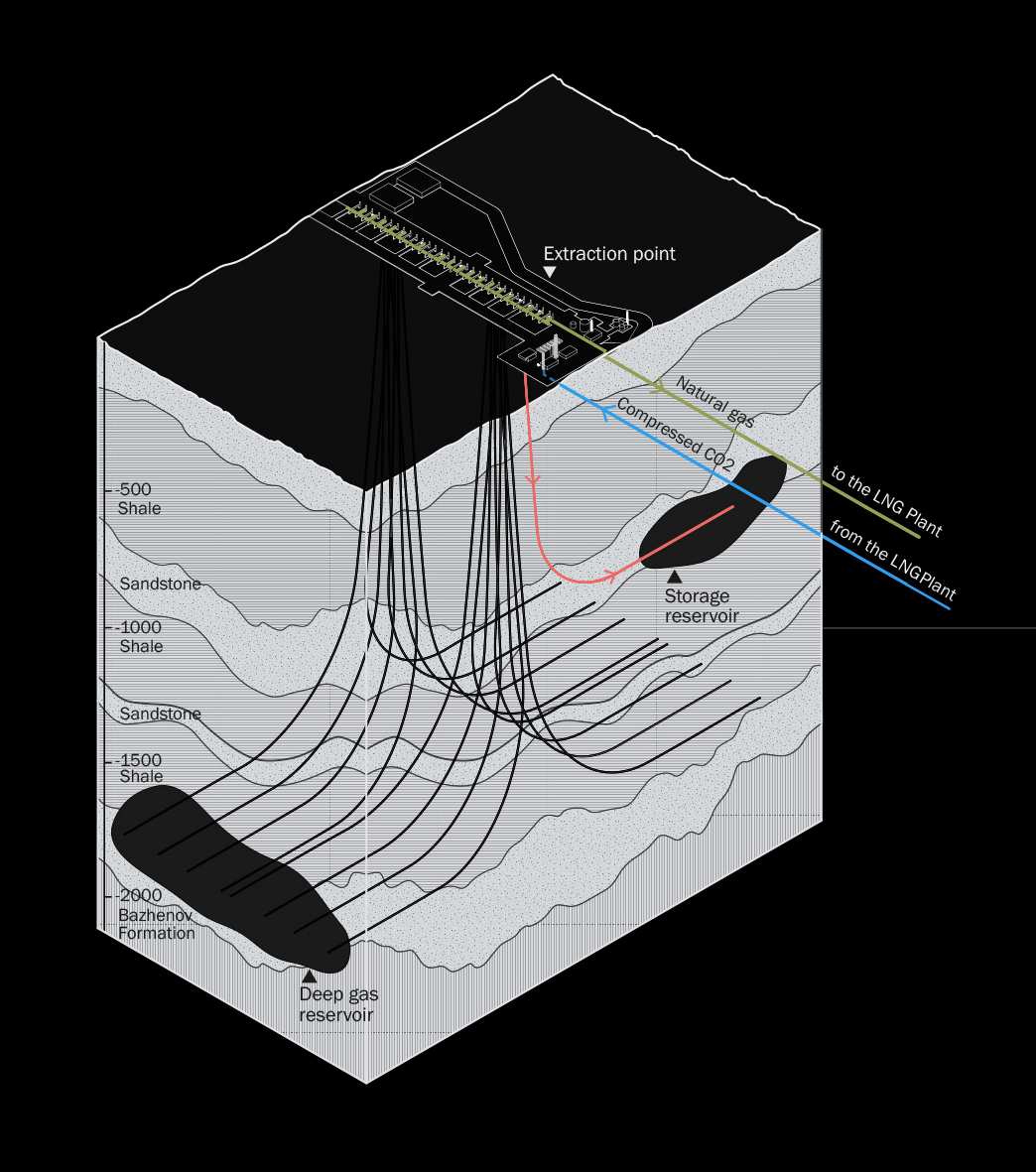
Carbon Injection
_____
After the CO2 is captured it is easily transformed into condensate gas through heating the filter with which it is collected. Once it is captured, it can be processed in several ways depending on the conditions of the surrounding environment.
The safest way to store the CO2 is to re-inject it back into the Earth. Some countries, like Norway, started implementing policies in their most recent oil exploration licenses, demanding the company holding the license to extract fossil fuels, to capture and re-inject CO2 emissions into the depleted underground reserves.
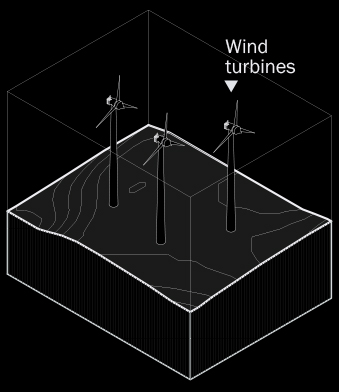
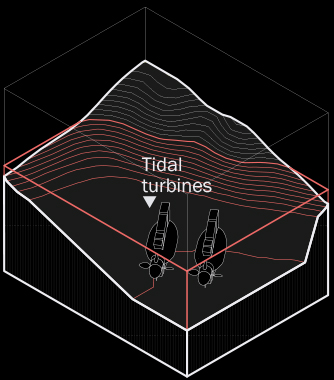
Energy will be provided through Wind and Tidal power plant
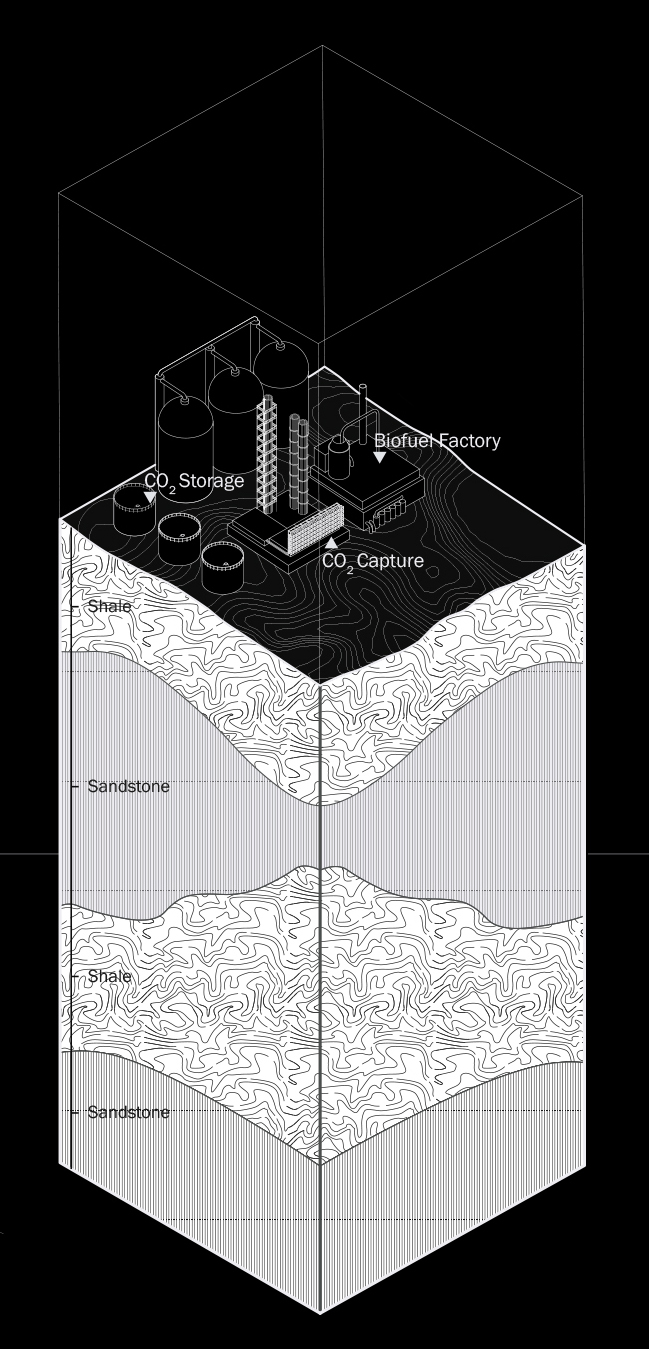
Carbon Biofuel
_____
The captured carbon (CO2) can also be used to create clean biofuels through synthesis with hydrogen (H2). The resulting octane (C8H18) is what we use currently to power cars and airplanes. This is currently being done on a smaller scale but the technology is evolving quickly to satisfy mainstream demands for fuel. The added benefit of this process is the release of fresh oxygen into the ambient air, while the burning of the clean synthetic hydrocarbon fuel does not emit sulphur or phosphate as fossil fuels do.
As the regulations of the International Maritime Organisation (IMO) get tighter, shipping companies like MAERSK are looking to power their vessels with carbon-neutral biofuels soon.
Synthetic biofuels can be produced in the Arctic Circle and then power clean ships along the Northern Sea Route.
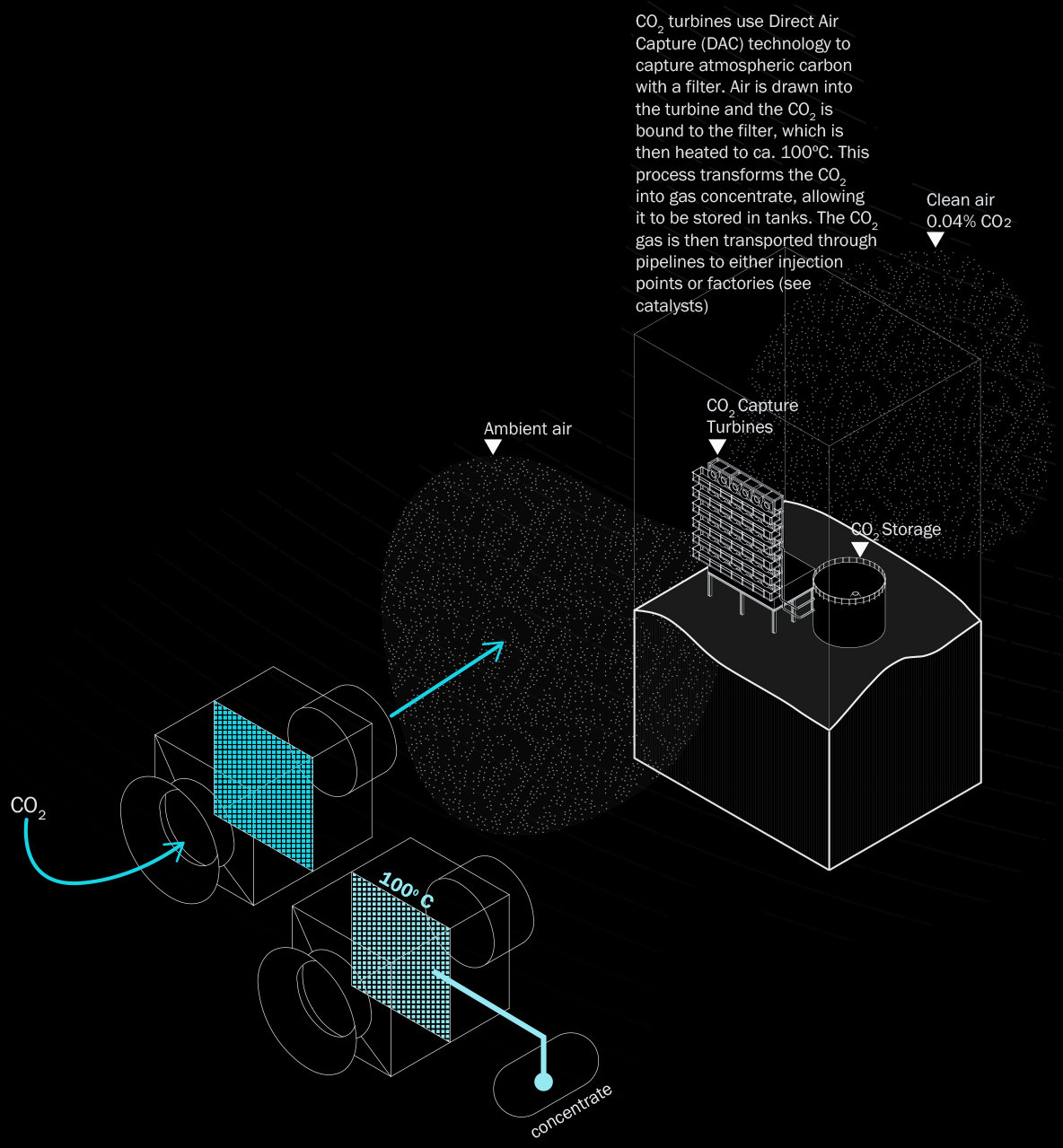
Direct Air Capture (DAC) Technology
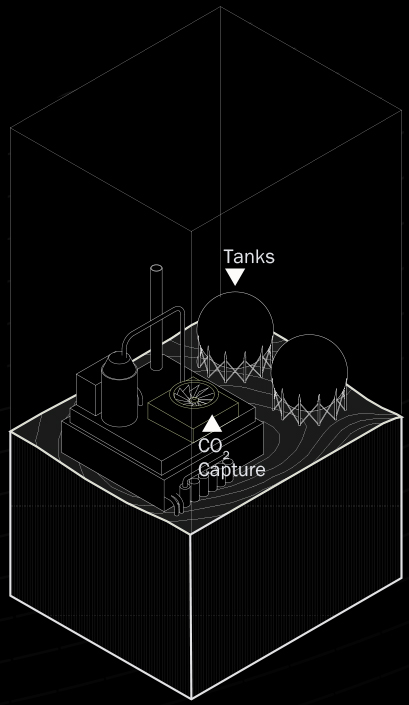
Carbon capturing at the source before release into the atmosphere
Blockchain
______
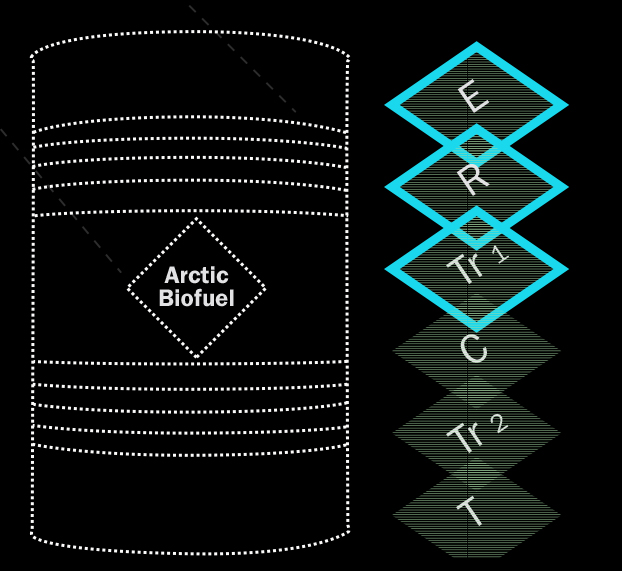
Digital Certificates of Origin
_____
These will give transparency to every product exported from the Arctic region and/or through the Arctic routes.
The main characteristics of these certificates are:
+ When users receive the product, they are able to track its origin in the most transparent way
+ Users will acknowledge that when the product reaches them, the chain is only half way completed
+ Users (or any other interested entity) can track the complete life of each good or material.
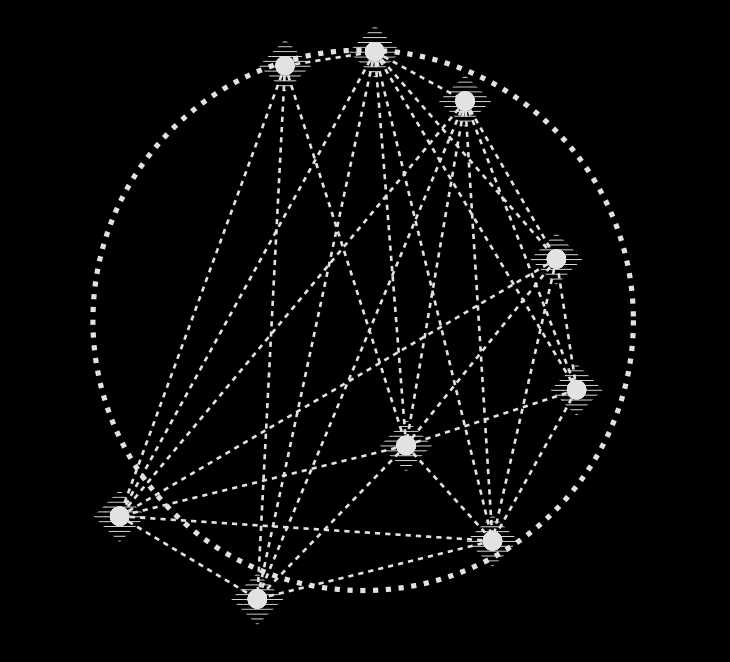
Blockchain and Smart Supply Chains
_____
A blockchain is essentially a distributed chain of stored data. It is at the same time visible to anyone but hard to alter, as it is not stored in one single server but in many locations at the same time. It can be understood as a digital and safer version of the ledgers that merchants and traders have used through history, making them the best way to successfully track the provenance of every material involved in a supply chain. After the establishment of the bar code as the means to transform a material object into data, the next step in the creation of a transparent and secure supply chain is to remove the monopolistic control of actors along it. This benefits both ends, as suppliers can keep track of their inventories or secure every purchase with smart contracts, while consumers are able to track the origin of every component and can make informed decisions.
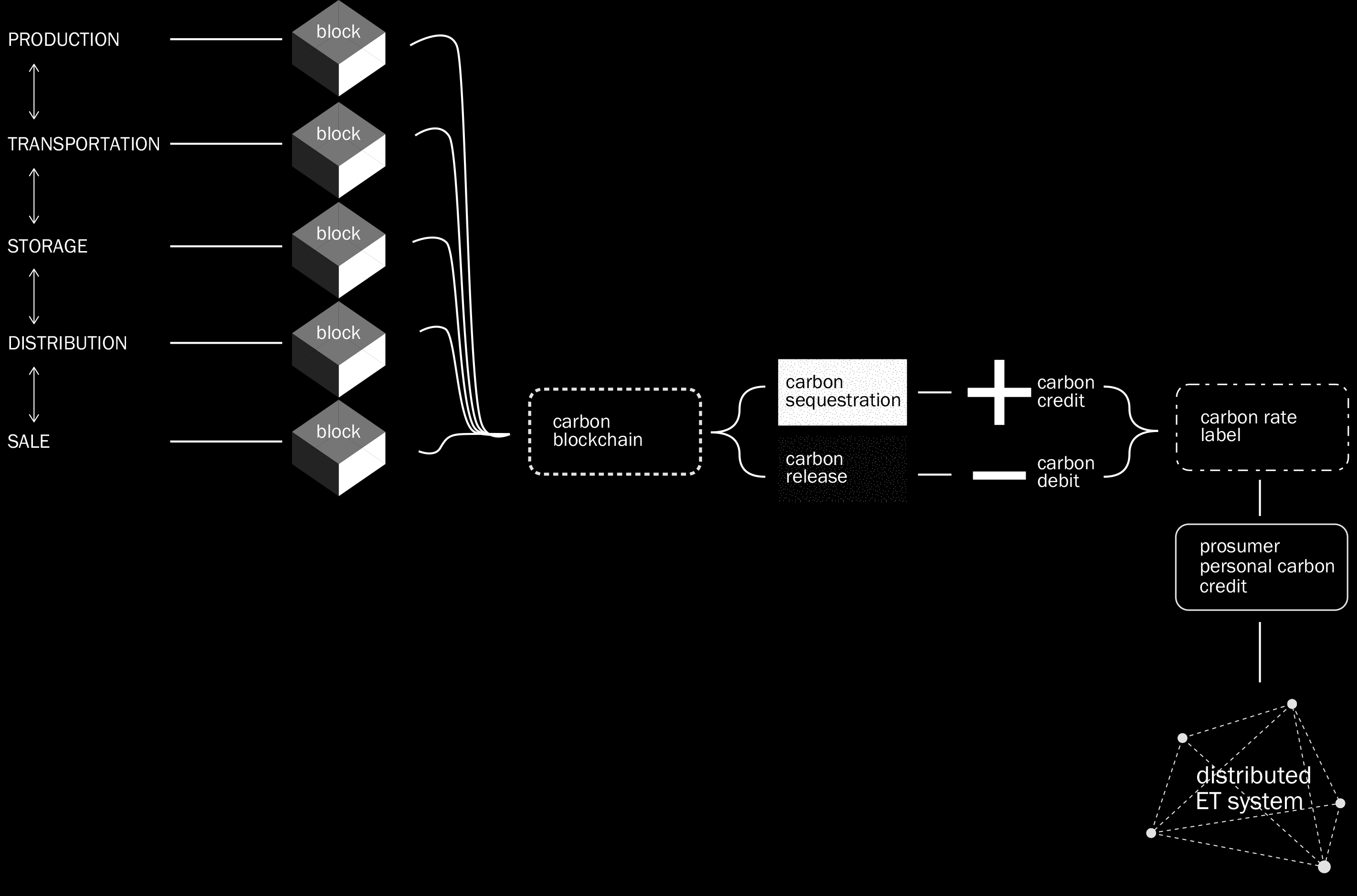
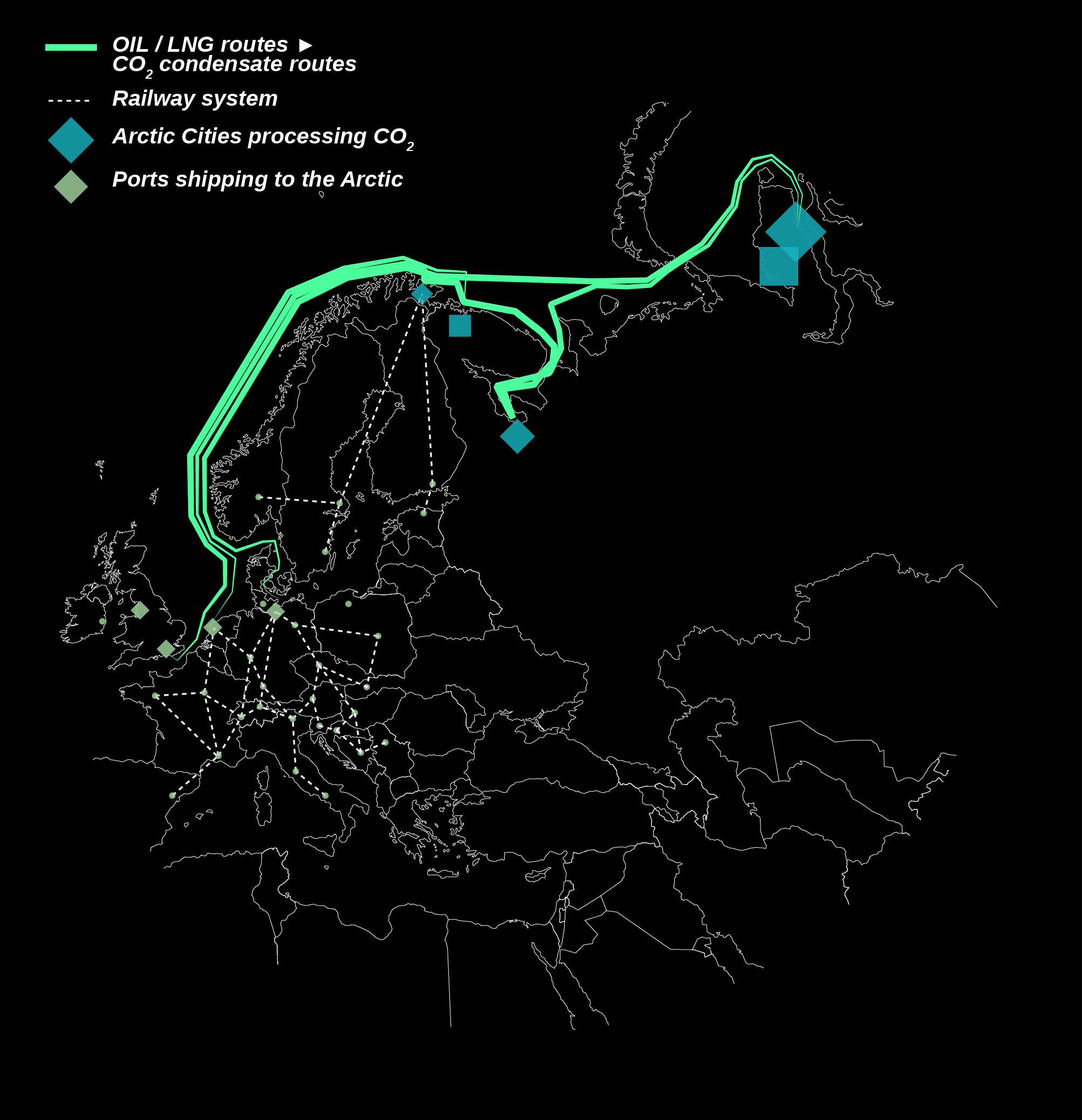
Shipping back CO2 emissions to their origin
_____
International policies that work as incentives to global capturing of CO2 emissions could play an important role in our planet’s future.
By 2049, everyone should be able to capture, store and send back CO2 emissions to their origin, which, in most cases along the Global North, means the Arctic Region.
All LNG ships that normally make their journey back to the plant completely empty, could be adjusted to be able to reload their tanks with CO2condensate and bring it back to the source where it could be successfully sequestrated.
To promote this practice, governments could offer tax reductions or exemptions to companies or individuals harvesting the CO2 from the air. Additionally, a Carbon Trade system for individuals could be implemented through a blockchain platform. This would create an incentive for consumers to make informed decisions while purchasing goods or services.
The Case of Sabetta / Russia
______
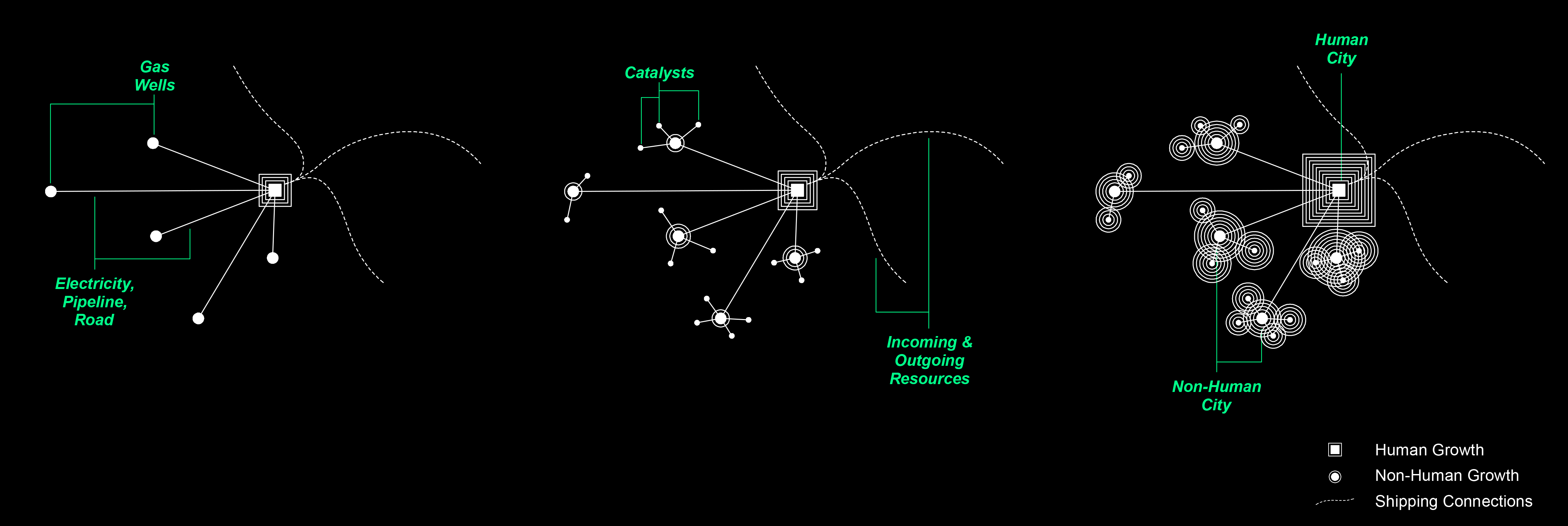

+ PHASE 3
URBANIZATION
[9 000 INHABITANTS]
With a diversified economy, the character of the city starts to change. A civic life takes hold and the shift towards the knowledge economy becomes evident. By now, the supply chain connections in Europe, China and the rest of the world have adjusted to the new carbon reservoirs and the awareness of the “artificial lung” in the arctic circle is everywhere. More cities like Sabetta start to proliferate in the
Arctic Circle.
+ PHASE 0
EXISTING SETTLEMENT
[3 000 INHABITANTS]
The current company town, run by the Russian gas company Novatek, is centered around the LNG plant which is connected to the port. Wells are located all around the South Tambey gas field and they are connected to the central plant with roads, power lines and pipelines, forming a tentacle-like network that serves and is nurtured by a control center of humans.
+ PHASE 1
HACKING
[5 000 INHABITANTS]
In this phase, conservative economic activity around gas and oil production is further increasing, but CO2capturing techniques are being introduced. Carbon processing and storage will be required, and traditional secondary industry is expected to settle, which increases the need for human workers. Investment is slowly shifting away from the fossil fuel sector and the drilling wells start their simultaneous task of injection and storage. A separation can be seen between the human and the non-human built environment.
+ PHASE 2
FLIPPING
[7 000 INHABITANTS]
Now, the drilling wells that are scattered like electrodes over the surface of the earth become the origins of further growth. As they are already connected to the “mothership”, attaching more non-human functions to them is simple. Centered around each multipad well, the other catalysts, tree farms, server farms and CO2air capture facilities emerge. Some of the wells stop to extract gas and focus only on carbon storage. In this stage, the settlement diversifies in its economic activity and becomes the home of a new type of civic society that is committed to restoring the carbon cycle of our planet.
Publications
______
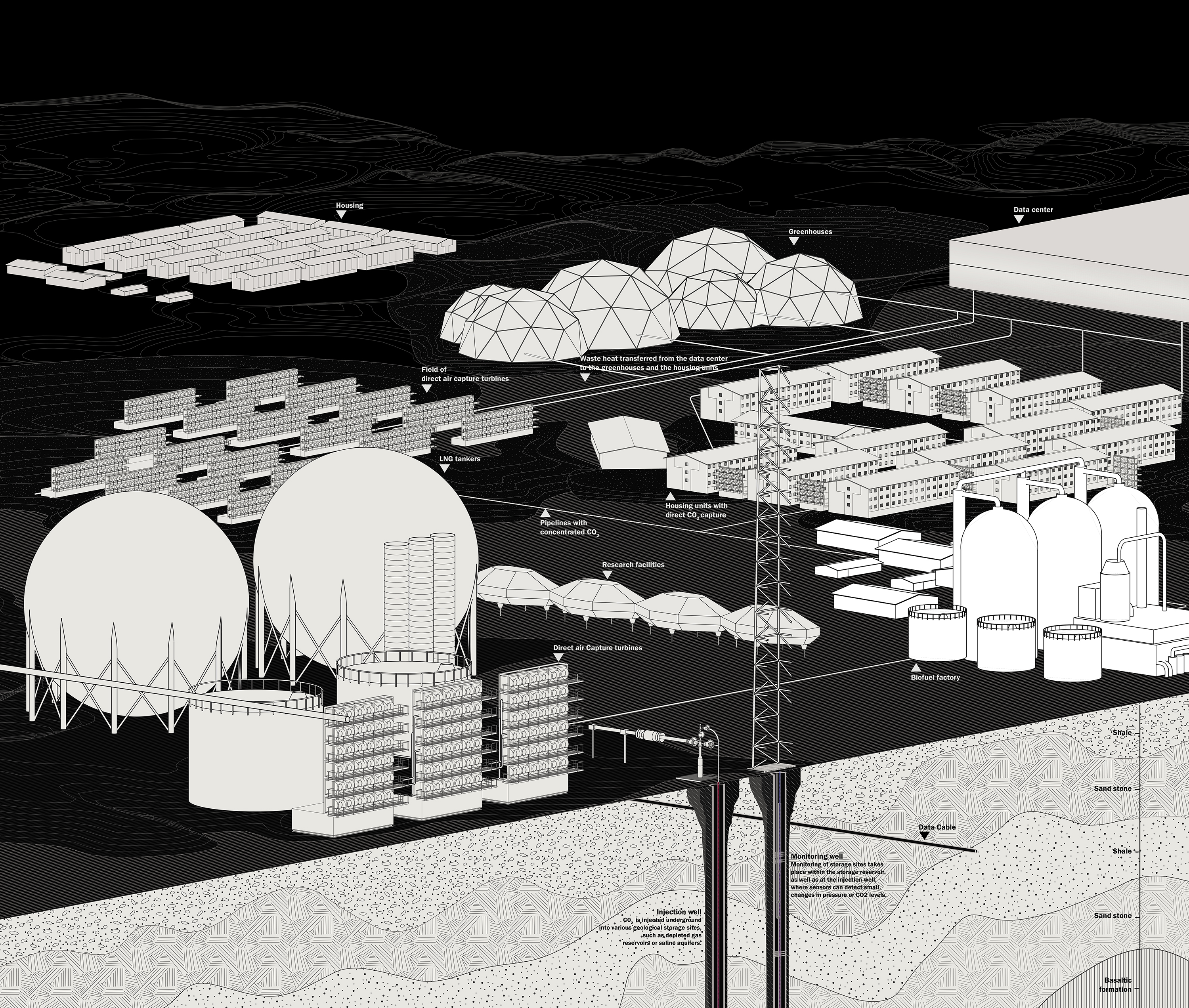
By Carolyne Couston, Evelina Faliagka, Rosa Pintos Hanhausen, Lukas Utzig
CHORA Conscious City Chair for Sustainable Planning and Urban Design
Technical University Berlin, Department of Architecture
2019
